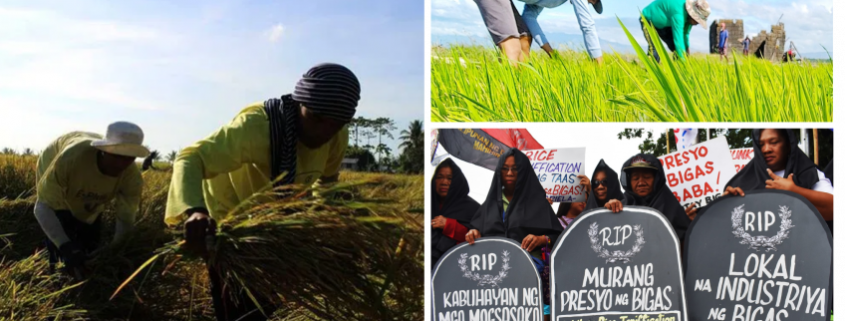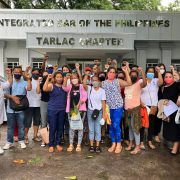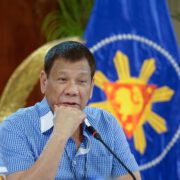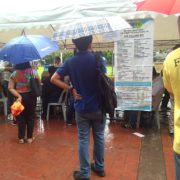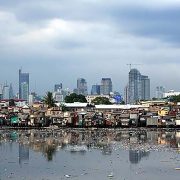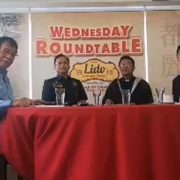Filipino rice farmers need support, not liberalization
by IBON Media & Communications
In a statement, National Economic and Development Authority (NEDA) acting secretary Karl Kendrick Chua said: “The Philippines generally does not have a natural comparative advantage in rice production compared with neighbors like Thailand, Vietnam and Myanmar which all have large flat plains, fewer or no typhoons, less history of land inequality, and access to the Mekong River system, which serves as a great source of natural irrigation, as well as lower population growth rates.”
On that basis, NEDA argues that rice liberalization is the logical thing to do and that the Rice Liberalization Law (RLL, or Republic Act 11203) is already benefiting the country. The problem with this argument is that it treats food security like a game that you lose just because you do not have the right starting conditions. That’s a free market-based argument that only has a semblance of sense in economics textbooks.
In the real world, and as proven by the experience of literally every successful developed economy, comparative advantage can and should be modified with government intervention. Chua omits how government neglect and policies like the Rice Liberalization Law (RLL) are what undermine Philippine rice production and domestic agriculture. The Philippines can improve productivity, increase production, and provide enough rice for Filipinos with sufficient government support to rice farmers and the rice sector. The government’s defeatist attitude and blind surrender to market forces is the biggest reason why Philippine rice production and domestic agriculture as a whole remains so backward.
The RLL is captive to that narrow-minded thinking and just makes things worse.
Misplaced praise
NEDA hails the Rice Competitive Enhancement Fund (RCEF), a component of the RLL, which supposedly guarantees Php60 billion pesos from rice importation revenues for six years. RCEF will supposedly help rice farmers to modernize and innovate. This seems to be helping rice farmers.
Instead, RLL is killing the rice industry. Over a year into RLL and because of unrestrained rice importation, palay prices have fallen to as low as Php8-10 per kilo. This is a huge 50% drop from the Php20 per kilo price of palay before the law was passed. Rice farmers have cumulatively lost some Php84.8 billion in earnings in the first full year of implementation or around Php35,328 per rice farmer. Earnings are not enough to pay for the cost of production.
As a result, farmers from Philippine rice granaries such as Isabela, Nueva Ecija, Laguna and Mindanao are already thinking to stop planting rice. At least 3,000 rice mills have already stopped operating.
Farmers were facing worse prospects for selling palay even before the RLL. The government earlier clipped the powers of the National Food Authority (NFA) to influence and support the price of rice in the market by restricting the amount of palay and rice it buys locally .
RCEF claims to enhance farmers’ competitiveness through mechanization, seeds distribution and trainings. However, its coverage is actually limited and can even aggravates farmers’ indebtedness.
RCEF reportedly aims to cover 1.9 million rice farmers listed in the Registry System for Basic Sectors in Agriculture (RSBSA) and Department of Agriculture (DA)-accredited rice cooperatives and associations. This still leaves out at least half a million rice farmers. The Integrated Rural Development Foundation (IRDF) has for instance already estimated that the annual Php10 billion RCEF allocation will not be enough to offset the losses that RLL causes rice farmers, which it computes to be between Php60-Php110 billion.
Loans may also just worsen indebtedness if productivity or earnings do not increase much and if farmers’ expenses are still too high. Loans are too easily eaten up by production costs such as for expensive commercial seeds, fertilizers, pesticides and tools. The government does not make any effort to make these more affordable. Landless farmers may just end up using loans to pay their land rent to landlords.
These are why so many government loan programs have just kept so many farmers in a cycle of debt. The Agricultural Competitiveness Enhancement Fund (ACEF) and the Sugar Industry Development Act (SIDA) also provide rural credit. RCEF and the older ACEF and SIDA reportedly make Php2.1 billion in funds available for easy credit to rice farmers. About Php2.5 billion of ACEF funds were allegedly lost to corruption in 2014. Meanwhile, stakeholders lament that SIDA funds reportedly amounting to some Php2 billion per year since 2015 have so far been underutilized.
Worsening neglect
NEDA’s negativity about the country’s rice industry glosses over the government’s accountability for the agriculture sector’s backwardness because of its long-standing neglect. Government policies on land and food such as the RLL, relying on imported agricultural products, allowing rampant land use conversion, and flawed land reform only worsen the impact of this neglect.
The agriculture sector shed over one million jobs between 2017 to 2019 which is the most jobs lost in a 3-year period in 21 years. The sector’s 2.1% average annual growth in the same period was below its 3.5% average annual growth for 70 years from 1947-2016. Agriculture’s share in gross domestic product (GDP) has fallen to its smallest in Philippine history at 7.8 percent. The agricultural trade deficit in 2018 was also the largest in the country’s history at US$8 billion.
Agriculture is still such a significant part of the economy and these signs of weakness point to how much needs to be done to bolster the sector. And yet, under the Duterte administration, the budget for agriculture and agrarian reform averaged just a measly 3.6% of the total national budget annually from 2017 to 2019. This is even slashed further to just 1.6% in 2021. This means that the government’s capacity to support farmers with facilities, subsidies and other assistance is declining.
Rice farming households are also among those who will not be getting any more cash assistance. Although agricultural production was among the least affected sectors by the pandemic, earnings from rice farming are so poor that many rural families also rely on various odd-jobs in the informal sector which have been adversely affected. Yet the proposed 2021 budget for cash assistance has been reduced to just Php9.9 billion from over Php260 billion under the emergency Bayanihan 1 and Bayanihan 2 laws.
Support our producers
The Philippines’ annual average rice self-sufficiency ratio over the last 30 years was 91% and the country was 93% rice self-sufficient as of 2017. Yet rice can be much cheaper and the country can be fully self-sufficient if only there was enough support, subsidies and facilities for the country’s 2.4 million rice farmers. We do not have to import our staple food and rice farmers can have decent incomes.
Why do we have to risk not having rice on the table from rice-exporting countries stopping exports to make sure that they have enough to feed their own people? How sure are we that the price of rice will remain stable if domestic production remains backward and global rice prices are volatile?
Why make our farmers suffer? Along with other producers, they provide the nation with food to eat, yet they are among the poorest.
The government is liberalizing the critical rice sector out of blind adherence to so-called free market and globalization policies. All this does is create opportunities for giant agribusiness corporations to make even more profits from selling their expensive, chemical-laden, unhealthy, and environmentally-destructive products.
Filipino farmers have to deal with so many man-made woes aside from the vagaries of the weather. Yet they are not passive to these. Farming communities nationwide practice sustainable agriculture. These should be recognized and supported. Indigenous peoples’ schools teach organic agriculture and oppose corporate encroachment on their lands. These should be hailed not vilified or shut down.
Peasant organizations struggle for their own land to till. They deserve to be given these as well as given the means to make these productive. Precarious rural incomes and livelihoods should become a thing of the past. And, as every Filipino deserves, farming communities should have decent education, health and housing as well as the conveniences of water, electricity, telecommunications and transport. In all of these, the government’s role in running an economy for the people is the most important intervention of all. #

